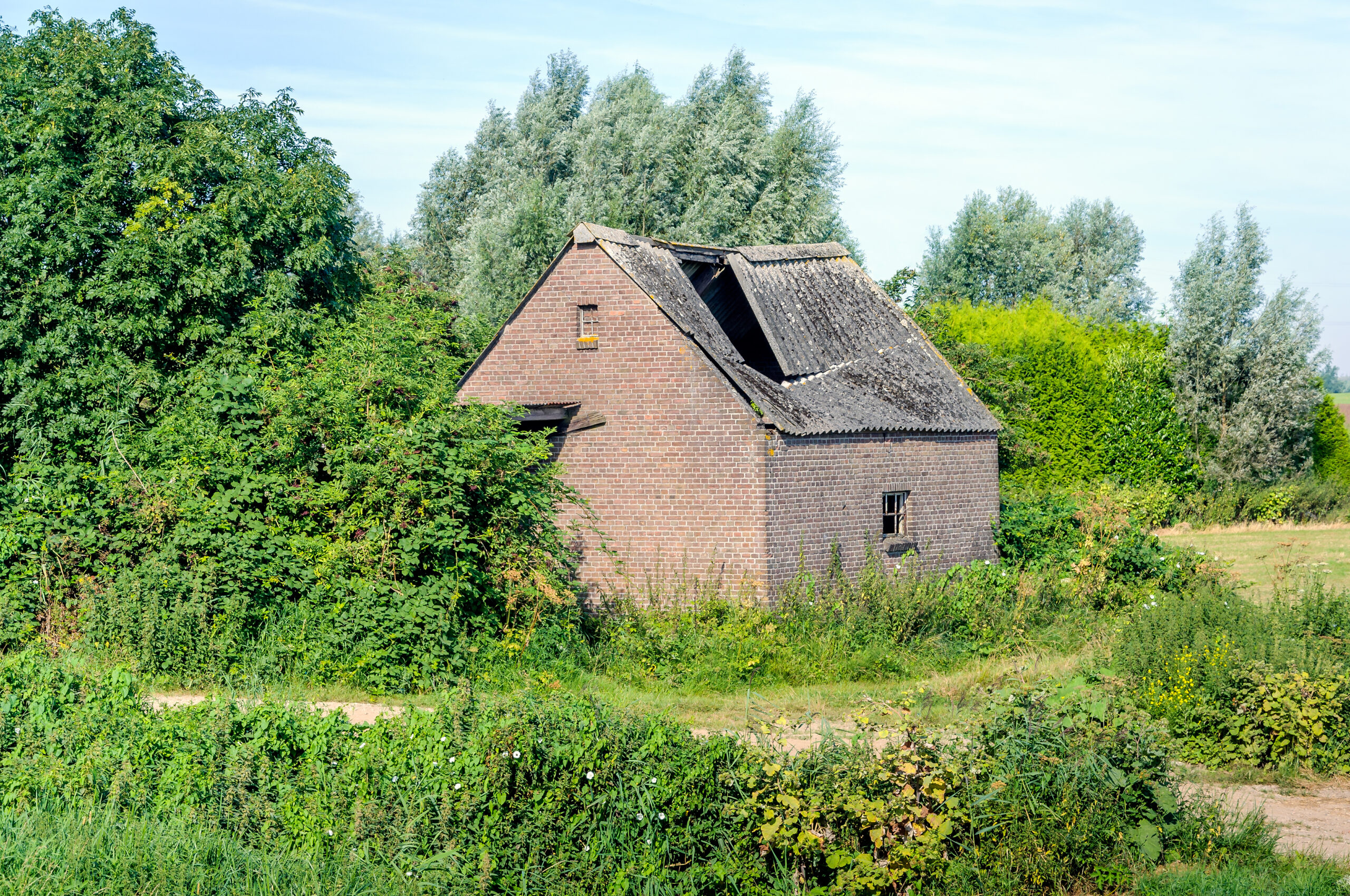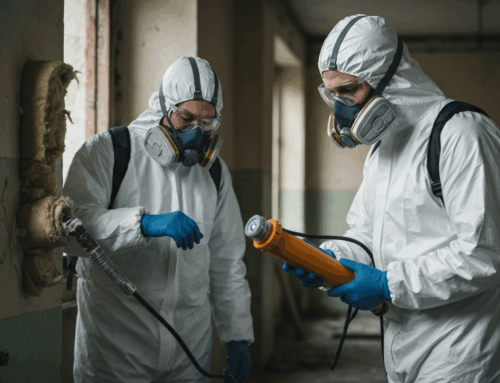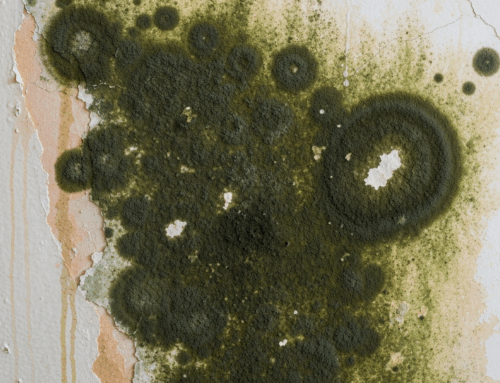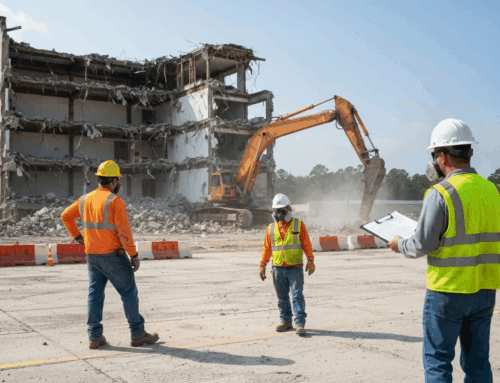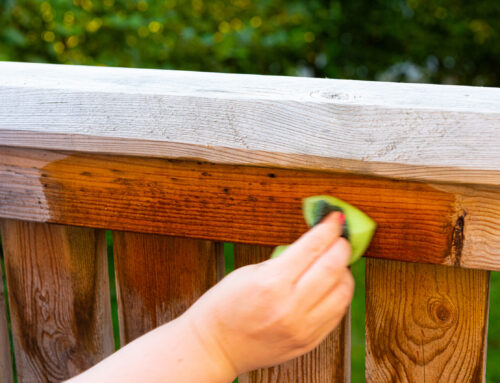Severe weather events, common occurrences in South Carolina, can unfortunately leave behind more than just visible destruction. Flooding, high winds, and structural damage can expose hidden hazards within buildings, one of the most serious being asbestos. When materials containing asbestos are disturbed by storm damage or subsequent cleanup and repair efforts, microscopic fibers can become airborne. Inhaling or ingesting these fibers poses significant health risks. Understanding the potential for asbestos exposure is crucial for anyone dealing with the aftermath of a storm, making safe practices for storm damage asbestos removal South Carolina a top priority for homeowners, property managers, and contractors alike.
Identifying Asbestos Risks After Severe Weather
After a severe weather event tears through a community, the focus is often on immediate safety and damage assessment. However, a less visible but equally dangerous threat can be lurking: disturbed asbestos-containing materials (ACMs). Asbestos, a naturally occurring mineral, was widely used in building materials until the late 20th century due to its heat resistance, strength, and insulating properties. Unfortunately, these same qualities mean that when materials containing asbestos are damaged – like crumbling insulation, broken tiles, or shattered drywall – they can release hazardous fibers into the air.
The risk of exposure increases dramatically after storms because the structural integrity of buildings may be compromised, leading to the disruption of materials that were previously stable. Water damage from floods can saturate materials, causing them to become fragile and more likely to release fibers when handled. Wind damage or falling debris can physically break apart building components, directly releasing asbestos dust into the environment. This widespread disturbance means that properties of any age, but particularly those built before the 1980s, could potentially contain exposed or easily disturbed asbestos.
Identifying whether a material contains asbestos typically requires laboratory testing. However, post-storm, the immediate concern is treating potentially harmful materials with caution. Assuming that damaged building components may contain asbestos is the safest approach, especially in older structures or when dealing with common ACMs. Recognizing the potential presence of this hidden hazard is the first critical step in ensuring the safety of everyone involved in post-storm cleanup and repair efforts in South Carolina.
Common Places Asbestos is Found in Storm-Damaged Buildings
Asbestos’s versatility led to its incorporation into a vast array of construction products. Following severe weather, the damage can affect various parts of a building, potentially exposing asbestos in unexpected places. Awareness of these common locations is vital for anyone undertaking cleanup or repairs after a storm in South Carolina.
Some of the most frequently encountered asbestos-containing materials in older buildings include:
- Roofing Materials: Asbestos was often used in roofing felt, shingles, and sealants due to its fire resistance and durability. High winds can tear these materials apart, creating a significant risk.
- Siding: Cement siding products, often referred to as transite siding, commonly contained asbestos. Storm impact can crack or break these panels, releasing fibers.
- Insulation: Various types of insulation, including vermiculite insulation (which may contain asbestos), pipe insulation, and boiler insulation, frequently used asbestos. Water damage can compress or dislodge insulation, making it friable and dangerous.
- Flooring: Vinyl floor tiles, sheet flooring, and the adhesives used to install them often contained asbestos. Flooding or impact damage can loosen or break tiles, releasing fibers.
- Ceilings: Ceiling tiles, acoustic plaster (popcorn ceilings), and joint compound (used in drywall installation) are known to contain asbestos. Water saturation can cause ceilings to collapse, scattering ACMs.
- Walls: Drywall itself, joint compound, plaster, and some types of wall insulation may contain asbestos. Significant structural damage can expose these materials.
- Pipes and Ducts: Asbestos paper or millboard was used for insulating pipes and ducts, and asbestos cement was used for vent pipes. Damage to HVAC systems or plumbing can disturb these materials.
- Furnaces and Boilers: Gaskets, insulation, and other components within older heating systems often contained asbestos.
This list is not exhaustive, as asbestos found its way into hundreds of building products. The key takeaway is that many common building materials, especially those installed before the mid-1980s, should be treated with caution if damaged. Identifying these potential sources is a critical first step in planning for safe storm damage asbestos removal South Carolina.
Who Needs a Licensed Contractor for Storm Damage Asbestos Removal South Carolina?
Navigating the regulations surrounding asbestos removal, especially in the chaos following a severe weather event, can be complex. The rules regarding who must use a licensed asbestos contractor for storm damage cleanup and remediation in South Carolina depend primarily on the type of building affected.
Federal and state regulations governing asbestos abatement, such as those enforced by the South Carolina Department of Health and Environmental Control (SCDHEC), generally apply to what are termed regulated buildings. These include institutional, commercial, public, and industrial buildings. This also extends to multi-unit residential properties like condominiums or individual dwelling units operated as residential cooperatives. If a storm has damaged a regulated building and the damage involves materials containing asbestos that are being disturbed, renovation or demolition activities will require the services of a licensed asbestos abatement contractor.
For residential buildings with four or fewer dwelling units, federal and state asbestos regulations typically do not mandate the use of a licensed contractor for the homeowner’s own work. However, this does not mean that the health risks are any less severe for residents of these properties. While the regulations may not require a license for DIY work in single-family homes, attempting storm damage asbestos removal South Carolina without proper training, equipment, and safety protocols is extremely dangerous. Asbestos fibers are a known carcinogen, and even short-term, high-level exposure can pose a long-term health threat.
Even if not legally required for a small residential property owner, hiring a licensed asbestos contractor is always the safest and most responsible choice. Licensed professionals have the expertise, specialized equipment, and training necessary to safely identify, contain, remove, and dispose of asbestos-containing materials in accordance with stringent safety standards. They understand the regulations and can ensure the work is done in a way that minimizes exposure risks to occupants, neighbors, and the environment. Furthermore, if a homeowner chooses to hire a contractor for asbestos work on a residential property, even if not legally mandated, that contractor must still be licensed and follow all applicable regulations. Choosing a qualified professional ensures the work meets the necessary safety and legal standards, providing peace of mind during a stressful time. Understanding the nuances of understanding South Carolina asbestos removal laws is key to making informed decisions.
Essential Safety Practices for Homeowners
While licensed contractors are mandatory for regulated buildings and highly recommended for residential properties, homeowners in South Carolina facing storm damage may consider some initial steps while awaiting professional assessment or if dealing with minor, non-regulated asbestos concerns. It is crucial to understand that these practices are aimed at minimizing disturbance and potential exposure and do not constitute safe asbestos abatement. Full removal should ideally be left to the experts.
If you suspect asbestos is present in damaged materials on your residential property, prioritize these safety measures:
- Limit Access: Keep people, especially children and pets, away from damaged areas where asbestos-containing materials may be exposed.
- Do Not Disturb: Avoid touching, moving, breaking, or cleaning up suspect materials unless absolutely necessary and with extreme caution. Any action that could create dust should be avoided.
- Keep Materials Wet: If you must briefly handle suspect materials (e.g., during emergency stabilization), keep them wet using a gentle mist from a garden sprayer. Water helps to bind the fibers and prevent them from becoming airborne. Avoid high-pressure spraying, which can worsen fiber release.
- Avoid Dry Sweeping or Vacuuming: Never sweep or vacuum up dust or debris that may contain asbestos. Standard vacuums can aerosolize fibers.
- Wear Protective Gear: If you must enter a damaged area with potential asbestos exposure, wear appropriate personal protective equipment (PPE). This includes a minimum of an N95 respirator (ideally a half-face or full-face respirator with P100 filters), disposable coveralls with a hood and foot coverings, disposable gloves, and eye protection. Dispose of PPE safely after use.
- Double-Bag Suspect Debris: If minor amounts of suspect, damaged material must be temporarily contained, double-bag it in heavy-duty plastic bags, seal them tightly, and label them clearly as potentially containing asbestos. Store them securely away from occupied areas.
These are only rudimentary precautions. The safest course of action for any significant or widespread damage where asbestos is suspected is to contact a qualified professional for assessment and storm damage asbestos removal South Carolina. Handling hazardous materials after demolition or damage requires specialized knowledge and equipment to ensure safety. For more information on handling hazardous materials, see removing hazardous materials before demolition SC safety first.
Hiring Qualified Asbestos Professionals in South Carolina
Choosing the right professional for storm damage asbestos removal South Carolina is a critical decision that impacts the safety and health of your property’s occupants and the surrounding community. Not all contractors are licensed or equipped to handle asbestos abatement, and using an unqualified firm can lead to improper removal, increased fiber release, and potential legal issues.
In South Carolina, the Department of Health and Environmental Control (SCDHEC) regulates asbestos activities and licenses contractors qualified to perform asbestos abatement. When selecting a professional, it is essential to verify their credentials. A licensed asbestos abatement contractor has undergone specific training, follows strict work practices, and is subject to state oversight. This ensures they understand how to safely contain the work area, remove asbestos-containing materials, clean the site thoroughly, and handle disposal properly.
Here are key steps and considerations when hiring a contractor for storm damage asbestos removal South Carolina:
- Verify Licensing: Always ask for proof of a valid South Carolina asbestos abatement contractor license. You can typically verify this information through the state’s regulatory agency website or by contacting them directly.
- Check for Experience: Inquire about their experience specifically with storm-damaged properties and similar types of materials or buildings as yours.
- Request References: Ask for references from past clients who had similar work performed.
- Obtain Detailed Quotes: Get written estimates that clearly outline the scope of work, the materials to be removed, the methods of containment and removal, disposal procedures, timeline, and total cost. Be wary of exceptionally low bids, which might indicate shortcuts in safety procedures.
- Understand the Process: A reputable contractor will explain their work plan, including how they will seal off the work area (containment), use negative air pressure, wear appropriate PPE, remove the materials while keeping them wet, and perform post-abatement cleaning and air monitoring.
- Ensure Proper Disposal Plans: Confirm that they will dispose of the asbestos waste at a landfill permitted to accept such materials, following all regulatory requirements.
- Review Contracts Carefully: Read the contract thoroughly before signing. It should detail all aspects of the project, including safety protocols and regulatory compliance.
While it might be tempting to use a general debris removal service after a storm, if asbestos is suspected, it is imperative to use a contractor specifically licensed for asbestos abatement. Their specialized training and equipment are essential for protecting health during this hazardous process.
Correct Procedures for Asbestos Waste Disposal
Proper disposal of asbestos-containing materials is a critical step in the storm damage asbestos removal South Carolina process and is subject to strict regulations. Improper disposal can lead to widespread contamination and significant environmental and health hazards. Licensed asbestos abatement contractors are well-versed in these requirements, but homeowners undertaking limited, non-regulated work should also understand the basic principles.
Asbestos waste cannot be disposed of in regular trash or at standard landfills. It must be transported and deposited at a landfill specifically permitted to accept asbestos. These landfills have designated areas and procedures for handling hazardous waste to prevent fiber release into the environment.
Key procedures for handling and disposing of asbestos waste include:
- Wet the Material: Before handling, wet the asbestos-containing material thoroughly to minimize the release of airborne fibers.
- Bag and Seal: Carefully place the wet material into heavy-duty plastic bags (typically 6-mil thick). Double-bagging is recommended for added security. Ensure bags are tightly sealed, often using duct tape to gooseneck the tops.
- Label Clearly: Each bag or container of asbestos waste must be clearly labeled with specific warnings indicating the presence of asbestos.
- Transport Safely: Transport the bagged and sealed waste in a secure vehicle to prevent bags from tearing or opening during transit.
- Dispose at an Approved Landfill: Deliver the waste only to a landfill that is permitted by the state to accept asbestos waste. There are specific procedures for depositing asbestos waste at these facilities, which typically involve placing it in a designated area and covering it promptly.
- Obtain Necessary Permits/Notifications: Depending on the amount and type of asbestos waste, permits or notifications may be required by the state environmental agency before disposal. For residential homeowners disposing of non-friable asbestos from their own single-family home, a notification may still be required to obtain a disposal permit from the Asbestos Section before taking the material to a landfill.
These steps are critical for preventing exposure during and after disposal. Licensed contractors handle this entire process, including the necessary notifications and transportation, ensuring compliance with regulations. Attempting to dispose of asbestos waste improperly can result in substantial fines and pose a severe risk to public health and the environment. Therefore, understanding and following correct disposal procedures is a non-negotiable part of any storm damage asbestos removal South Carolina project.
Getting Official Guidance and Assistance
Navigating the complexities of post-storm cleanup, especially when hazardous materials like asbestos are involved, can be overwhelming. Fortunately, official resources are available in South Carolina to provide guidance and assistance to homeowners, businesses, and contractors.
The primary state agency responsible for environmental regulation, including asbestos, is the South Carolina Department of Health and Environmental Control (SCDHEC). Their website and relevant departments, particularly the Bureau of Air Quality’s Asbestos Section, are invaluable resources. They provide information on state asbestos regulations, licensing requirements for contractors, procedures for notifications and permits (including those potentially applicable even to homeowners for waste disposal), and lists of licensed professionals.
Key ways official sources can assist include:
- Regulatory Information: Providing detailed information on state and federal regulations regarding asbestos inspection, removal, and disposal. This is crucial for ensuring compliance, especially for regulated facilities.
- Licensed Contractor Verification: Offering databases or lists of currently licensed asbestos abatement contractors operating in South Carolina. This allows property owners and managers to verify credentials before hiring.
- Permitting and Notification Guidance: Explaining the requirements for renovation and demolition notifications and waste disposal permits. They can guide individuals through the necessary paperwork and procedures.
- Health Information: Providing information about the health risks associated with asbestos exposure and how to protect oneself.
- Post-Storm Specific Guidance: Often, during widespread severe weather events, regulatory agencies may issue specific guidance or modified procedures to help streamline safe cleanup while maintaining public health protections. Looking for specific asbestos after severe weather advisories from state agencies is advisable.
It is highly recommended to consult official state resources early in the cleanup process if asbestos is suspected or known to be present. Their guidance ensures that storm damage asbestos removal South Carolina is conducted safely and legally, protecting not only those directly involved but the broader community as well. Additionally, reputable, licensed contractors stay up-to-date with all current regulations and can help guide their clients through the necessary steps. Accessing and utilizing these official channels is a sign of responsible management of hazardous materials during a challenging time.
Dealing with the aftermath of severe weather and the potential presence of asbestos requires careful planning and execution. By understanding where asbestos may be found, recognizing when professional help is required, adhering to essential safety practices, ensuring correct waste disposal, and leveraging official guidance, individuals and businesses in South Carolina can navigate the challenges of storm damage asbestos removal safely and effectively. Prioritizing safety and compliance is paramount to protecting health and the environment during the recovery process.
Have questions? Contact us here.

